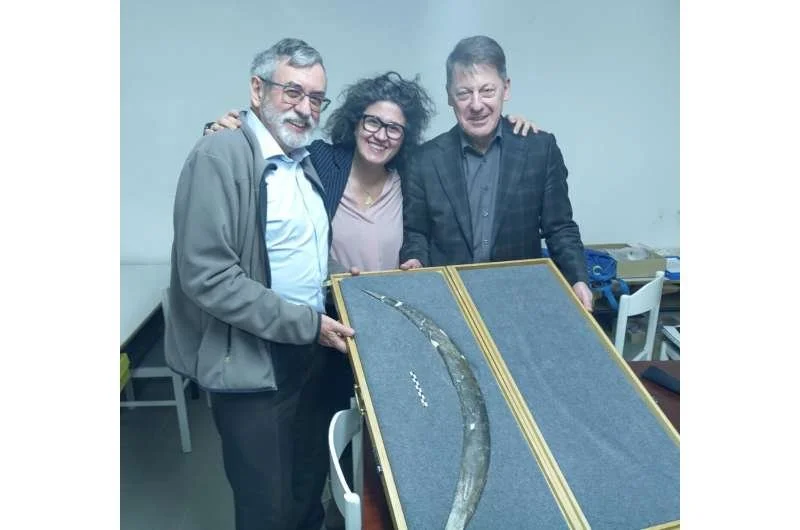Malta is home to some of the most ancient and mysterious megalithic structures in the world, predating even the iconic Pyramids of Egypt and Stonehenge. These monumental sites, dating back to 3600-2500 BC, continue to intrigue archaeologists and history enthusiasts, raising questions about the advanced capabilities of the civilizations that built them.
The Age and Mystery of Malta’s Ancient Temples
Ggantija, Malta. Credit: flickr / tpholland CC BY 2.0
Some theories, like those proposed by Graham Hancock, suggest that the temples could be even older—around 11,000 years old—and may have been aligned with the star Sirius. Whether these ancient structures are truly that old or belong to the Neolithic period as commonly believed, they remain a source of fascination. The temples of Ħaġar Qim, Mnajdra, Tarxien, and Ġgantija are among the oldest surviving structures on Earth, offering a glimpse into a long-lost society.
A Glimpse into a Neolithic Civilization
Hagar Qim, Malta. Credit: wikimedia commons / Hamelin de Guettelet BB NY 3.0
The Maltese temples suggest that the island was home to an advanced Neolithic society. Despite the absence of written records, these people left behind impressive architectural feats and a handful of artifacts. This lack of evidence has led to much speculation and debate, challenging the conventional timelines of human history.
In the words of Hancock from the series Ancient Apocalypse, “Could these early farmers, who historians say only built simple shelters, really have achieved all this?”
The mystery surrounding these sites only deepens, making us wonder what secrets these ancient buildings could reveal if they could speak.
Ġgantija Temples: Giants of Prehistory
Tarxien temple doorway. Credits: Wilhelm Thomas Fiege, CC BY-SA 4.0, via Wikimedia Commons.
The Ġgantija Temples, located on Malta’s Gozo island, are among the world’s oldest freestanding structures. Built between 3600 and 3200 BCE, these massive temples are made from enormous limestone blocks, earning them their name from the Maltese word for "giant." According to local legend, the temples were built by mythical giants, but their true purpose seems to be religious, with altars, inner chambers, and niches suggesting their use in rituals.
The temples’ advanced design, including corbelled walls and upright stones, is a testament to the ingenuity of the Neolithic Maltese people, who built these structures without the aid of metal tools or the wheel. Predating even Stonehenge and the Great Pyramids, Ġgantija is now a UNESCO World Heritage Site and offers a glimpse into Malta’s early architectural sophistication.
Ħaġar Qim and Mnajdra: Astronomical Wonders
Hypogeum of Ħal-Saflieni upper level. Credits: xiquinhosilva, CC BY 2.0, via Wikimedia Commons.
The Ħaġar Qim and Mnajdra temples, located on Malta’s southern coast, are exceptional examples of Neolithic architecture, built between 3600 and 2500 BCE. Ħaġar Qim features massive limestone blocks and intricate carvings, suggesting its role in religious ceremonies.
Mnajdra is particularly fascinating due to its precise astronomical alignment. The temple’s entrance perfectly aligns with the sunrise during the solstices and equinoxes, pointing to the advanced understanding of astronomy possessed by the people who built it.
These temples, like the Ġgantija structures, were built without metal tools or the wheel, showcasing the remarkable capabilities of Malta’s prehistoric society. Both sites are now part of Malta’s UNESCO World Heritage and offer stunning views of the Mediterranean.
Tarxien Temples: Art and Rituals
The Tarxien Temples, located near modern-day Paola in Malta, are another UNESCO World Heritage Site. Constructed between 3600 and 2500 BCE, these temples are renowned for their detailed stone carvings and ritualistic design. The stone reliefs depict animals, spirals, and other symbols, suggesting that the site played a key role in the community’s religious practices, possibly including animal sacrifices.
The intricate carvings and the presence of altars and large stones indicate that these temples were central to the spiritual life of the Neolithic people. Numerous artifacts, including figurines and tools, have been found at the site, offering insight into the daily lives and beliefs of Malta’s ancient inhabitants.
Hypogeum of Ħal-Saflieni: An Underground Marvel
The Hypogeum of Ħal-Saflieni, located in Paola, Malta, is an extraordinary underground Neolithic burial site. Dating back to 3300–2500 BCE, the Hypogeum is carved entirely into limestone and consists of multiple chambers spread across three levels. The site features stunning red ochre wall paintings and is believed to have served both as a burial site and a ceremonial space.
Over 7,000 human remains have been discovered at the Hypogeum, along with various artifacts, including figurines, pottery, and tools. One of the most famous finds is the Sleeping Lady, a small figurine thought to represent fertility or the afterlife. The Hypogeum’s sophisticated architecture, particularly its acoustically resonant spaces, reveals the advanced engineering skills of its builders and offers a rare glimpse into the spiritual beliefs of Malta’s prehistoric culture.
Malta’s Megalithic Legacy
These megalithic structures highlight the skill and vision of Malta’s ancient builders. Though much remains unknown about the people who constructed them, the temples and burial sites provide a fascinating glimpse into the spiritual and technological achievements of the island’s prehistoric societies. Malta’s ancient monuments continue to captivate researchers and visitors alike, reminding us of the mystery and grandeur of our distant past.











